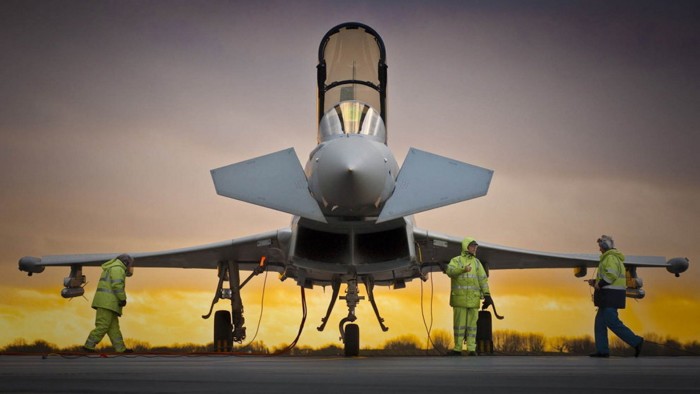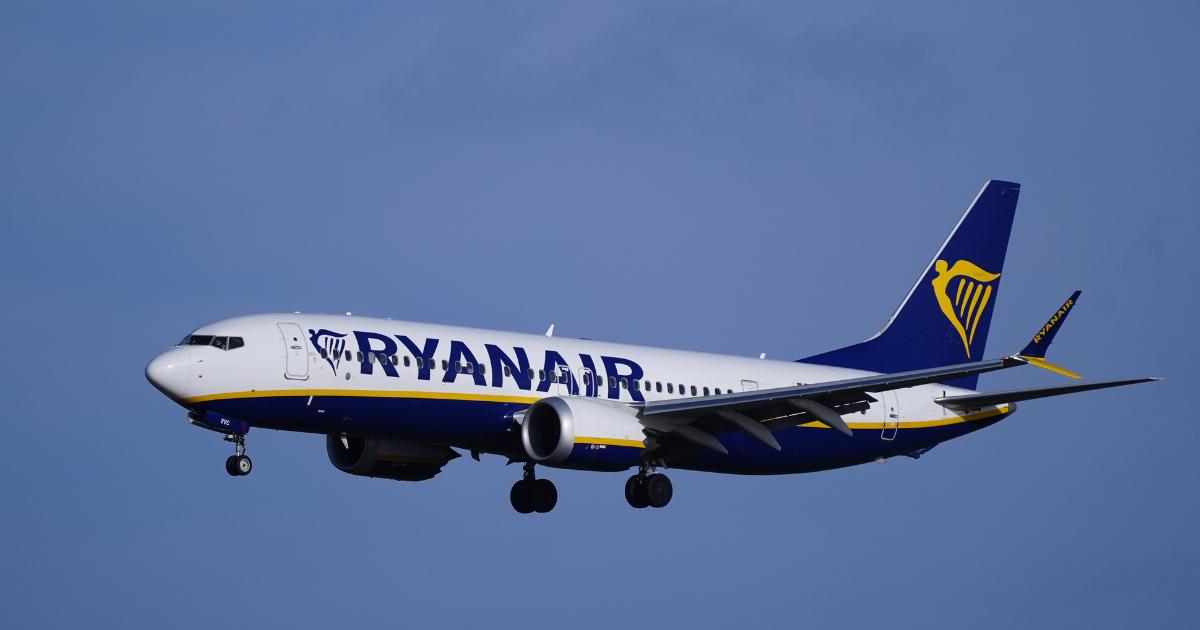Unlock the Editor’s Digest for free
Roula Khalaf, Editor of the FT, selects her favourite stories in this weekly newsletter.
British production of the Eurofighter Typhoon combat aircraft has ground to a halt because of a dearth of new orders, sparking fears of a loss of critical aerospace industry skills in the UK.
The Typhoon has for decades been assembled at BAE Systems’ sprawling factory in Warton, Lancashire. Work on the final assembly line, however, has now wound down as the factory prepares to deliver the last Typhoon jet for Qatar under a £5bn order placed in 2017.
“There is one jet in the hangar but it is basically waiting for a few parts and to be painted,” said one union official. “As far as major assembly goes, it’s finished, it isn’t sustaining any workers.”
The UK government has not placed an order for new jets since 2009, while follow-on export orders from Saudi Arabia and Qatar have yet to be agreed.
If new orders are not secured soon, there could be a loss of important industrial skills needed to build the next generation of fighter aircraft via the UK’s role in the Global Combat Air Programme (GCAP).
Sharon Graham, general secretary at the Unite union, said workers at BAE and across the UK defence industry “will be asking how a government promising to turn defence spending into ‘British growth, British jobs, British skills, British innovation’ could let it happen”.
“I have repeatedly told government ministers how much is at risk in terms of jobs, skills, and national security if we stop assembling our own fighter planes,” she added.
The Typhoon is built by a pan-European consortium including BAE, Airbus and Leonardo, with each company building different parts for every aircraft. They also operate a final assembly line in each partner nation — when a partner nation orders jets, or leads on an export deal, it assembles the aircraft.
BAE is still building the front fuselages for the Typhoons ordered by other nations at its nearby Samlesbury site, but these are then sent to the continent for final assembly.
The government’s recent decision to purchase US-made F-35A fighter jets rather than commit to a new order for the most advanced Typhoons has reignited debate over its defence priorities. Although the UK has committed to upgrading its current Typhoon aircraft, including with a new radar, it is the only nation in the consortium that has not placed an order for the latest model.
Andrew Snowden, Conservative MP for Fylde in Lancashire, warned last week that if the government “fails to confirm this order soon, we face the very real prospect of losing . . . a vital national capability, the ability to design, assemble and deliver world-class military aircraft independently”.
Defence Secretary John Healey last week refused to be drawn on whether it would place a new order but said the recent strategic defence review had confirmed the Typhoon’s importance, as well as a commitment to upgrades.
Healey also told the defence select committee that Britain expects to purchase a new tranche of 27 F-35s to start arriving by the end of the decade, of which 15 would be aircraft carrier capable F-35Bs. Under the new plan announced last month, 12 would be F-35As, which are cheaper and also capable of carrying tactical nuclear bombs.

Industry executives said talks on securing new export orders for Typhoons from Qatar, Saudi Arabia and Turkey were progressing.
Tim Robinson, editor of the Royal Aeronautical Society’s Aerospace magazine, said the break in “continuous combat aircraft assembly in the UK should hopefully just be a temporary blip between follow-on export orders for more Eurofighter and then GCAP”.
However, the “longer the gap, the more risk there is of a loss of key skills and critical experience that will be needed for next generation fighter aircraft”.
BAE said it was “experienced at responding to the changing demands of the Typhoon programme to ensure we retain our specialist skills”.
The “strong level of interest, commitment and investment in the aircraft from current and potential customers gives us confidence that Typhoon production in the UK will take us into the next decade,” BAE added.
The MoD said the Typhoon would remain the “backbone of the UK’s air defence until at least the 2040s”.
The UK, it added, was “leading export campaigns to other nations”. Future Typhoon “investment is subject to the Defence Investment Plan, which will be published later in the year”.


